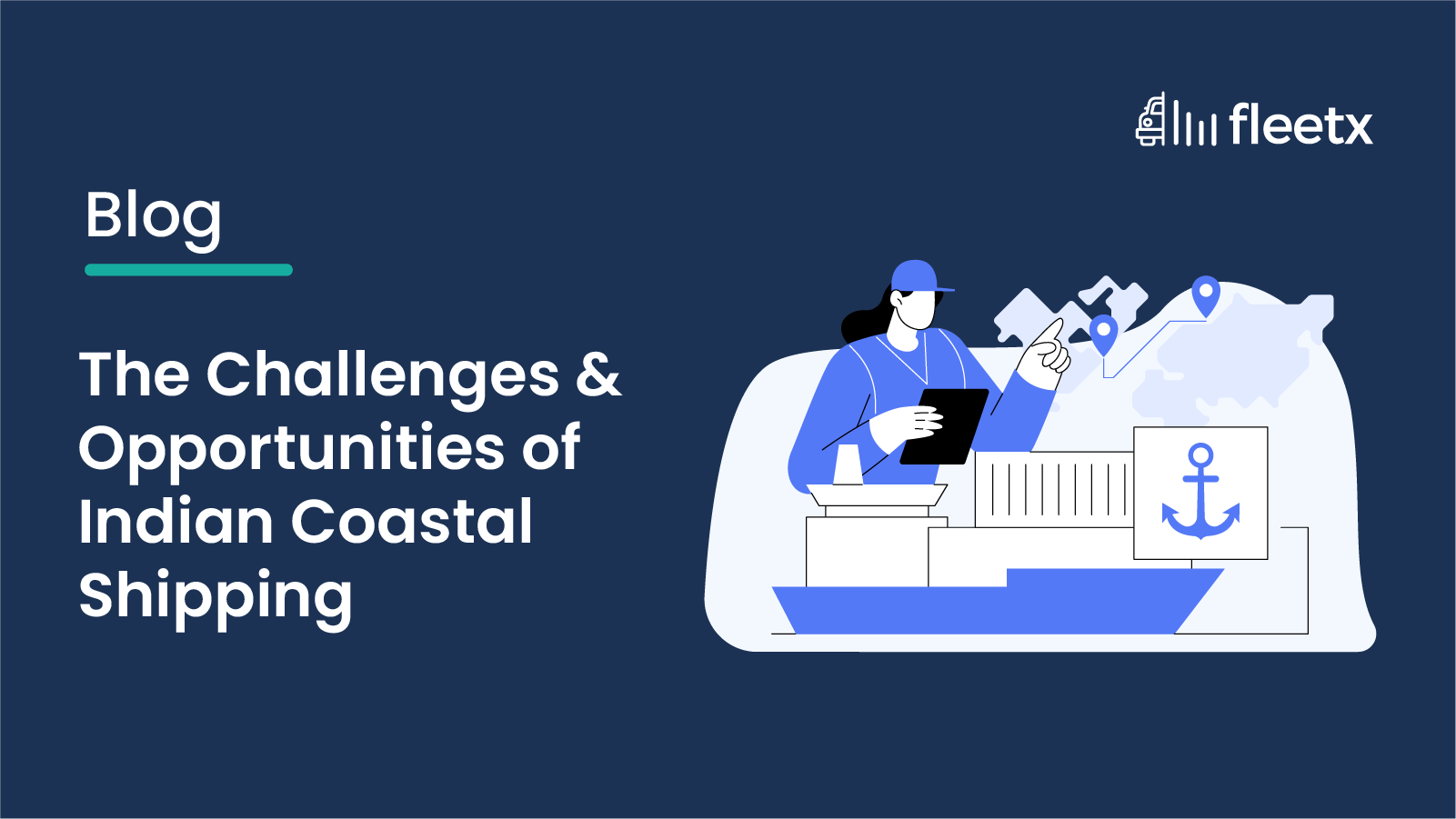
Global trade expansion relies on the sustainable growth of environment-friendly logistics, and India, being one of the largest global economies, has a significant role to play. Considering India’s strategic location on major shipping routes and an extensive coastline stretching over 7500 km and 14000 km of navigable inland waterways, its water transport logistics stands at an insignificant share of 6.4% in the country’s total trade logistics.
The potential is huge, but several barriers limit its optimum utilization in the transportation sector. However, with due attention to the long-term issues, the sector is gaining steady momentum.
Current State of Coastline Shipping in India
Coastal shipping is the mode of shipping that involves the movement of goods and people along the coasts without entering the deep-sea zone. By refining its coastal connection, India’s regional economic development can be significantly improved as well. Several initiatives and investment plans by the Ministry of Ports, Shipping, and Waterways are aimed at streamlining the sector and sorting the challenges it faces.
The Unrealized Potential
Growth potential in the coastal shipping sector is wide open in India, and the factors that prove so include:
Cost-Effectiveness - The outstretched Indian coastline is an economic alternative to the road and railway network. The benefits are critical in the bulk transport of commodities such as coal, minerals, fuel, machinery, big equipment, and more.
Easing Road Transport Pressure – Traffic congestion in the Indian road infrastructure can be significantly reduced by opting for coastal cargo shipping options, which would lead to overall improvement in transport network efficiency.
Regional Economy’s Growth – The coastal states would benefit immensely from improved trade connectivity, turning the ports into profit-generating hubs and generating employment opportunities.
Challenges Faced by Operational Coastal Cargo Forwarders
Several hurdles make the job of cargo forwarders and shippers demanding, such as:
Deficient Port Facilities
Various Indian ports are not fully equipped to manage the large quantities of coastal cargo, slowing the operations and increasing costs.
Regulatory Bottlenecks
Complicated legal requirements and lengthy approval processes prove to be a major hindrance in achieving smooth operational flow.
Road and Rail Networks’ Popularity
The established networks of roadways and railways have become a significant factor for shippers to choose an alternative mode of transport despite the lower costs involved.
Lack of Awareness
Limited awareness of the benefits associated with coastline shipping is another factor adding to the problem.
Opportunities Generated by the Latest Government Policies
The untapped potential of Indian coastal shipping has influenced the government to introduce transformative measures for addressing the challenges:
- Sagarmala Programme
As the flagship initiative of the Ministry of Ports, Shipping, and Waterways, the Sagarmala project has lined up several objectives and allocated funding to achieve the following:
- Port redevelopment and establishment of new ports to improve efficiency and capacity
- Improving road, rail, and waterway connectivity with ports for easy goods movement
- Promote economic development around ports to enhance economic opportunities and investments
- Coastal community upliftment through better infrastructure, employment, and resource accessibility
- Increasing the usability of coastal and inland waterways for shipping goods to reduce rail and road transport reliance
- Maritime India Vision 2030
Centered around the Blue Economy, the initiative is important for India to secure its place in the Global Maritime Sector with the following priorities:
- Developing an exceptional port infrastructure on par with global shipping standards
- Strengthen logistics efficiency through technology and innovation
- Provide support to all stakeholders through policies and building operational frameworks
- Increase India’s share in shipbuilding, repair, and recycling
- To build India’s maritime cooperation and strengthen its status at IMO
- Become a leader in the safe, sustainable, and green maritime sector
- Promote maritime research and training facilities and build a favorable ecosystem for seafarers
- Initiatives like Harit Sagar Green Port Guidelines and Green Tug Transition Program are aimed at promoting sustainable practices of using renewable energy, lowering emissions, and utilizing green tugs at all major ports
- Scope of 100% FDI in port development projects
- Jawaharlal Nehru Port Authority and JM Baxi Port and Logistics Limited signed an agreement for expanding shallow water berth and coastal berth projects at the former
- Construction of dedicated coastal berths and additional financial assistance for improving cargo/passenger movement by the sea
- Initiating the multi-modal logistics hub is aimed to boost coastal shipping as well
- Enhanced public-private partnerships and viability gap funding to promote coastal shipping
- Bunker fuel prices have been revised from 18% to 5%
- Cabotage relaxation for cargo vessels
- Integrating inland and coastal cargo
- Subsidies to Indian shipping companies
- Green channel clearance for coastal cargoes
Key Economic Benefits of Enhancing Coastline Shipping Infrastructure
Cost Benefits & Improved Logistics
- A cost-effective alternative to road and rail transport
- Higher competitiveness through lower cargo transportation expenditure
- Decongestion of India’s overworked highway and rail routes
Better Trade Outlook
- Better access to goods and services for coastal areas and remote zone inhabitants with enhanced connectivity
- Stimulating economic development in these remote areas
Employment Generation
- Direct and indirect job creation through developmental activities
- Flow of new investments in associated industries such as warehousing, distribution, and other value-added services
How Does the Future Look?
Following in the footsteps of waterways trade logistics shares of several global entities – China (24%), Australia (17%), and Germany (11%) – India’s coastal shipping initiatives are poised to deliver positive results in the long run.
Building sturdy coastal services that would provide valuable links for domestic trade and, in turn, boost the tourism sector, has been one of the top priorities of the Indian government, and the bundle of policies is a noteworthy step toward the goal.






